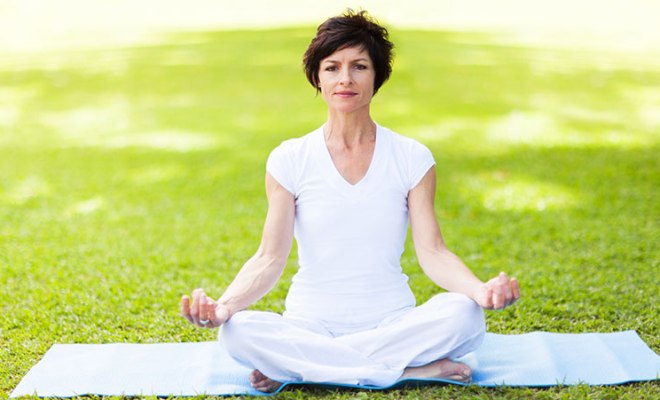“Mindfulness meditation” is getting more and more popular these days. That’s possibly because so many people try to find ways to relieve our collectively skyrocketing stress levels.
According to statistics 2013 from American Psychological Association (APA), more than three-quarters of Americans experience frequent physical symptoms caused by stress.
Almost the same number of individuals experience problems related to psychological stress, and 48 percent of Americans say that chronic stress negatively affects their personal and experienced lives.
You may be amongst those who are considering trying meditation to relieve stress. But do you know what “mindfulness meditation” really means, and how it can work for you?
Let’s learn more about the origins of the practice of meditation, and how improve your mental and overall health.
The basics of mindfulness meditation
Mindfulness meditation stems from historical Buddhist traditions, even though meditation has been practiced in cultures all over the world for hundreds of years and continues to gain interest and recognition in the West.
Today the concept of mindfulness has been incorporated into traditional and modern “positive” psychology, to help people overcome anxiety and depression while increasing their feelings of contentment and well-being.
Mindfulness is certainly a simple concept.
Psychology Today describes attention as “not directed to make us different from our existing state.” It’s about expanding your awareness of what you are feeling and experiencing from moment to moment and paying attention to those feelings rather than judging or trying to interpret what they mean.
While the idea of raising awareness may be easy to explain, it’s difficult to attain and takes time to develop.
But by taking a few steps to make meditation a habit, you will find that the practice begins to offer you a relaxed feeling of calm throughout the day and helps you face challenges more gracefully.
Make Meditation a Habit
Mindfulness meditation involves practicing mindfulness concepts in a meditative environment. Come take a guided “tour” on how to incorporate mindfulness meditation practices into your daily life.
- your place. Find a peaceful and quiet place to sit for 10 to 20 minutes. Your seat may be on a chair, or on the ground on a cushion or pillow. It’s fine if your meditation space is small, so long as you feel snug there.
- Your posture. Focus on your posture while you’re sitting. It helps if you’re comfortably upright, without strain or slouching. If you are sitting in a chair, ensure your feet touch the ground. If you are sitting on the ground, cross your legs and place your hands on your thighs with your palms facing down.
- your breath. Once you are seated in the meditation chair, begin to notice the breath going in and out through your nose. You do not need to force your breathing to be any deeper than usual. Use the natural rhythm of your breath as a point of interest for your meditation practice.
- Your mind. When you become aware of your breathing, you may notice that you’re thinking about a particular problem in your life. When this happens, notice how you are feeling, let the thoughts go, and gently return your attention to the breath.
What’s the point of doing all this? According to the Mayo Clinic, mindfulness practices such as meditation can help improve mood, reduce stress, improve your focus, and reduce your negative thinking patterns. Those are lots of great reasons to sit on your pillow!
Dealing with distractions
One of the biggest challenges you may face in mindfulness meditation is feeling distracted when you try to meditate. Keep in mind that this is normal, and is part of the practice.
When you end up daydreaming or getting distracted by other things going on in your life besides your meditation practice, pay attention to it.
You can even mentally label your thought as “thinking,” and without getting distracted by a loss of focus, return your attention to the breath.
As you become more snug with the process, you may want to increase the amount of time that you spend meditating.
If 10 minutes seems too long to sit still, start by meditating for just a couple of minutes while seated. Increase slowly to 10 minutes each day.
Later you may want to expand your practice to 20 minutes.
And remember: while you may still feel like you are not “doing anything” when you practice meditation, you are doing a lot.
You are taking steps towards a happier, healthier you.
Guest Author: Bella Hardy












